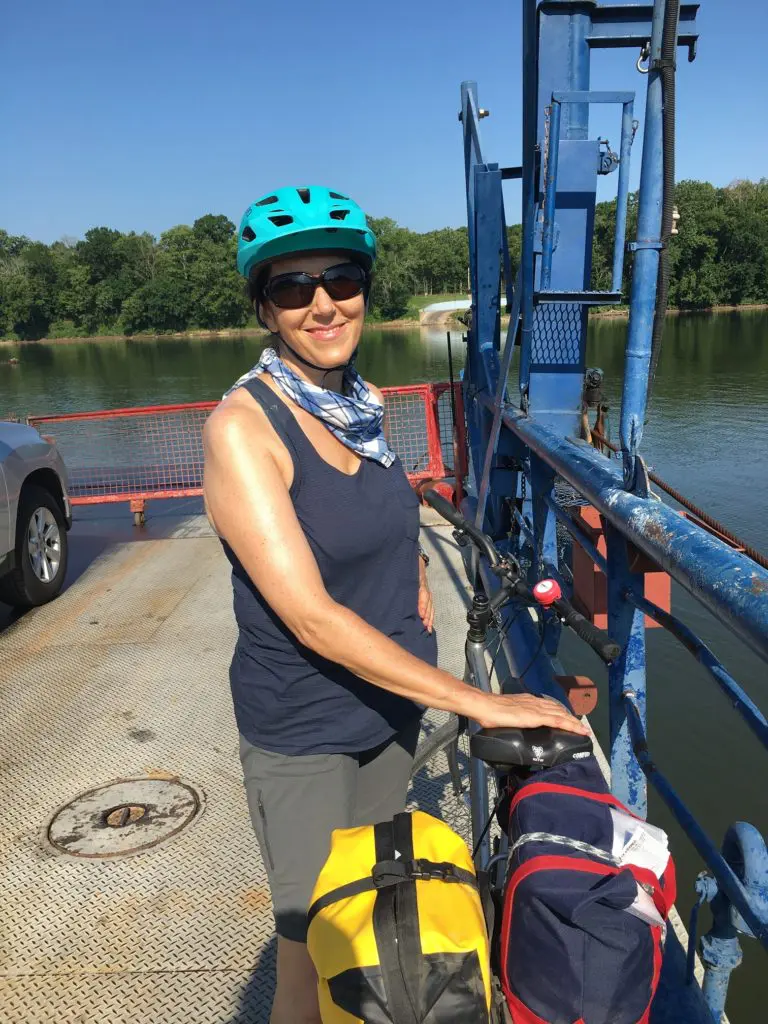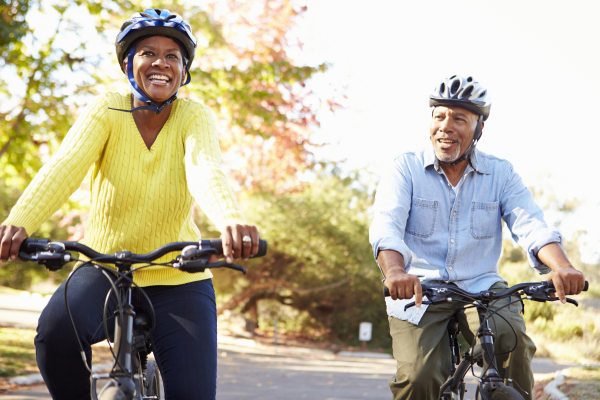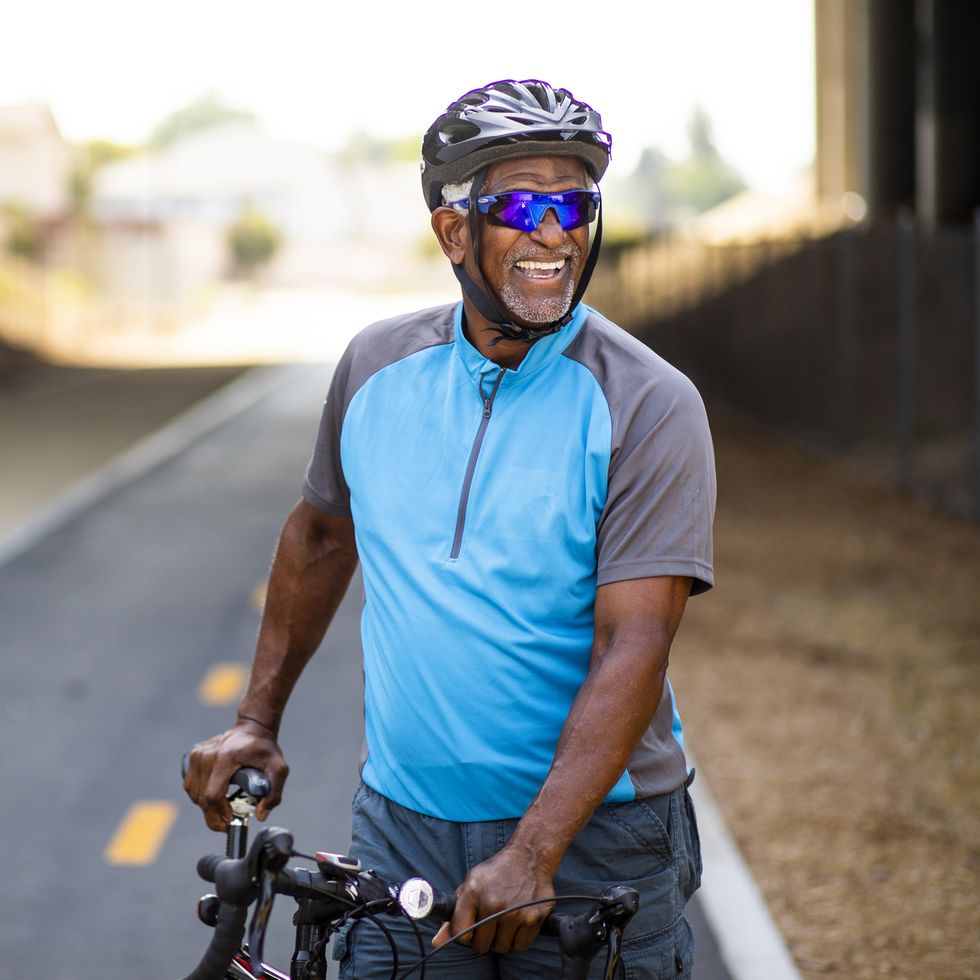Surprise! Older adults are leading the bicycle boom. Not only are more older adults riding bikes, a new national survey, supported in part by the AARP, shows they’re riding three to five times a week and laying down some serious tread, often logging 10 or more miles per ride.

Danielle Arigoni, director of AARP Livable Communities, said some people are surprised to learn just how passionate older adults are about cycling. What’s behind this surge? For one, cycling is good for older bodies.
Biking is an activity that’s fun and easy to do without putting a lot of strain on joints. Research shows it slows the aging process by improving strength, balance and cardiovascular health as well as boosting immunity and brain function. The enjoyment of being outdoors, and engaging with neighbors and the larger community, brings a sense of social connection that contributes to longevity and quality of life. This is especially important during this pandemic, when many older Americans are staying home more to keep safe.
Second, many older adults are looking for alternatives to driving a car without having to sacrifice autonomy and mobility, Arigoni said.
Bicycles are an affordable, convenient mode of transportation that meets these needs, which explains why older riders said they found cycling to be a staple of their lives that they couldn’t imagine doing without.
A GROWING INTEREST IN THE WHEEL THING
The 50+ Cycling Survey polled more than 3,000 cyclists age 50 and older about their cycling history and habits, information about the trip’s purpose and length, as well as preferences for cycling locations and conditions.

Image from Be Active Decatur
Among the key findings:
- Biking is social: More than simply a practical mode of transportation, older adults get out more often when they have someone to ride with.
- Cyclists want a connected community: Older adults prefer to cycle in communities that feature easily accessible places to shop, work and socialize.
- Safety is essential: Older riders want access to a high-quality bike network where “everyday cycling” is supported by infrastructure enhancements such as bike paths, dedicated bike lanes, and overpasses for safe roadway crossings.
The survey also found that COVID-19 motivated many older adults to start bicycling again or to ride more, which Arigoni attributed, in part, to having fewer cars on the road.
“We saw an increase in riders who require and benefit from the right traffic conditions to make it more comfortable and safer to ride,” Arigoni said.
CREATING LIVABLE COMMUNITIES
While cycling can help people 50 and older live their best life, it also requires creating safe streets and sidewalks for all people, whether they walk, bike or drive.
“The degree to which communities prioritize the safety of older adults, whether biking or walking, is a good indicator of how healthy and safe it is for people of all ages,” Arigoni said.
The AARP is dedicated to making communities livable for people of all ages. Watch this video to learn more about livable communities.
A LEG UP ON AGING-FRIENDLY BIKES

Image from Bicyling.com
As we age, our balance and stamina change, and we may find we’re not entirely comfortable on a road bike anymore. Many older adults want sturdier frames, wider tires, cargo room, and maybe a little help up a hill. The great news is aging-friendly bicycles, such as e-bikes and three-wheelers, are designed to address these and other challenges.
E-bikes: Battery-powered electric bicycles, or e-bikes, are growing in popularity, with use increasing with a rider’s age. Similar to regular bikes, you use gears and pedal as usual but with the option to give yourself a boost, or “pedal assist.” For older riders who may be new to biking or less conditioned, e-bikes can help them keep pace with more experienced riders. They can also help people who have arthritis or who are recovering from injuries enjoy the outdoors, and ride more confidently and for greater distances.
Trikes: Another great choice is the adult tricycle. These bikes have two wheels in the back, providing stability and control for anyone with balance issues. Whether built for riding upright or reclined (recumbent), both types of three-wheelers are built lower to the ground, often with “step-through” frames, making it easier for people with a lower range of motion to get on and off. They also offer wider, more cushioned seating that supports and distributes weight more evenly to help reduce pain and pressure while riding.
PUT YOUR METTLE TO THE PEDAL
The entire month of October, we’re celebrating the joy of bicycling by participating in Biketober – and we’d love for you to join us!
Create a team with friends, family or co-workers – or ride solo. The more you ride, the more chances you have to win great prizes, including an e-bike from Edison Bicycles!
To participate, all you have to do is:
• Register
• Enjoy a ride
• Log it here
• And earn points!
For more information, check out: ATLBikeChallenge.com
Title image from sixthreezero
